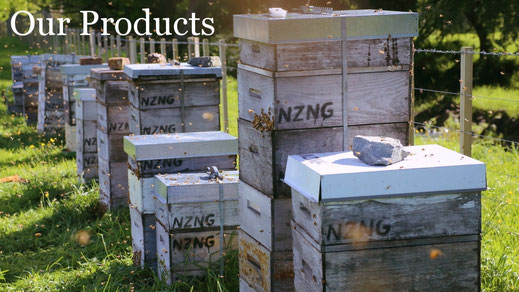Manuka Honey Explained
What is Manuka honey to begin with? Where does it come from? How to use it? If you landed to this page, you must be keen to learn more about this incredible golden mixture. Grab a cuppa, adjust your chair and get comfy!
Sweet mysteries are going to be unveiled.

What is Manuka honey?
Manuka honey is a unique product from New Zealand and also from Australia (known by its Australian name: Jellybush honey). But what makes it so special? I am glad you asked! First of all, this honey comes from a native tea-tree called the Manuka tree ("Leptospermum scoparium").
White flowers emerge from it during Summer and bees collect their precious nectar. Manuka honey is a delight, thanks to its strong caramelized flavour and a slightly biter after-taste. But that is not all! Some Manuka honey contain high anti-bacterial activities used as a medicine to treat wounds.
Manuka Honey healing properties
More than just gourmet honey, it is a natural mixture healing people. In order to use a graded Manuka honey (UMF+15 / MGO+514 or above) effectively for external uses (wound, cut, spot, bug bite, burn): spread it on a bandage. For internal applications (mouth and throat): simply eat it with a spoon. However, if you simply want to appreciate its outstanding taste, there is no need to look for any high anti-bacterial activity.

How does Manuka honey antibacterial activity work?
When high graded Manuka honey is applied (on a wound for instance), it provides a moist and acidic environment. Moisture helps regenerating skin tissues while the acidic component destroys bacterias, preventing any infection.
On the diagram (left), Manuka honey counters Staphylococcus Aureus to go inside the circle of inhibition. The radius of the circle is determined by the antibacterial level of your honey.
Example:
Manuka honey UMF15+ is equal to a 15mm circle of inhibition and a 15% phenol solution.
Manuka honey grading system
There are so many ways to talk about Manuka honey antibacterial activity and it is usually very confusing. But not to worry, some of those names share the same method of analysis and most of them are explained below. Have a look!
MGO (methylglyoxal): unique component highlighting Manuka honey antibacterial activity. MGO was found by scientists from Dresden (Germany) in 2008. This scale highlights methylglyoxal per kilo of honey.
Ex: Manuka honey MGO +200 = 200mg/kg of honey
NPA (Non-peroxide activity): this scale is equivalent to a classic phenol solution for preventing bacterias to penetrate a circle of inhibition. NPA is copyright-free.
Ex: Manuka honey NPA+10 = 10% phenol solution
UMF (Unique Manuka Factor): brand originally created by Dr Peter Molan and now issued by the UMF Honey Association. This organization promotes Manuka honey, tests it through their own labs and delivers licenses to beekeepers against a membership fee. The
scale is based on the same basis as NPA.
Ex: Manuka UMF+15 = 15% phenol solution
KFactor: private brand owned by Wedderspoon for certifying pollen count of their Manuka
honey. It is approved by the Ministry for Primary Industries (MPI) as a way to develop higher standards for New
Zealand beekeeping industry.
Ex: Kfactor 16 = guaranteed at least 75% of Manuka pollen grains
| MGO | NPA | UMF® |
| 83+ | 5.6 | 5+ |
| 263+ | 10 | 10+ |
| 354+ | 12 | 12+ |
| 514+ | 15 | 15+ |
| 692+ | 18 | 18+ |
| 829+ | 20 | 20+ |
Manuka honey grading general comparison


